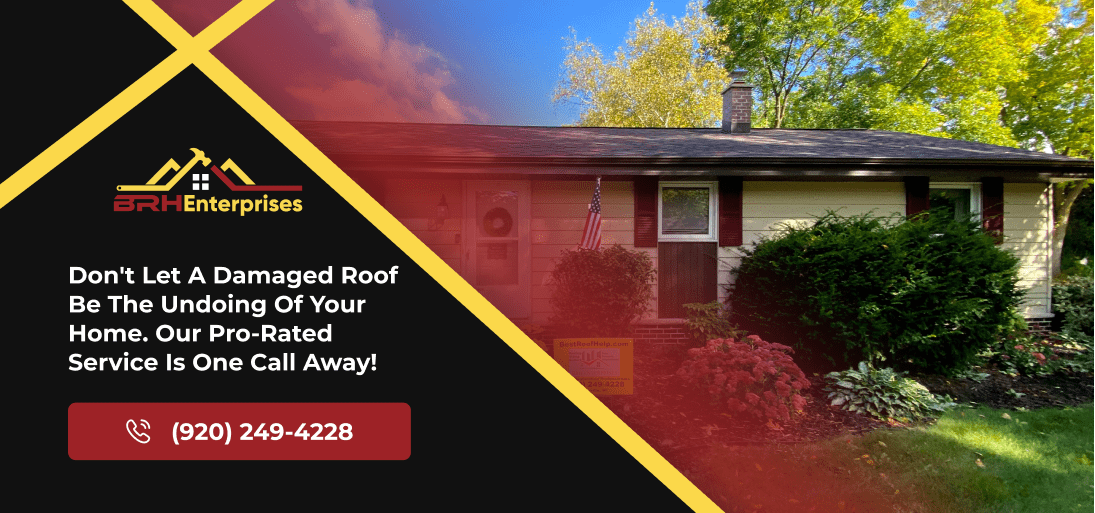Mastering Roof Valley Shingle Installation: A Complete Guide
Estimated Reading Time : 6 Min.

Roof valleys are critical components of any roofing system, especially in Southern Wisconsin, where heavy seasonal rainfall can put these vulnerable areas to the test. These V-shaped intersections, where two roof planes meet, channel substantial amounts of water during storms, making proper installation essential for preventing leaks and water damage. When installed correctly, valley shingles protect your home by creating a watertight seal at these junctions.
Different installation methods exist for roof valleys, each with advantages depending on your roof’s design and local weather conditions. The two main approaches include open valleys with exposed flashing and closed-cut valleys where shingles from one side overlap the other. Each technique requires precise underlayment placement, proper flashing installation, and careful shingle application to ensure long-term performance.
The valley shingle installation process includes selecting appropriate materials, ensuring correct measurements, and applying the right techniques to prevent water infiltration. The valley system must work seamlessly with the entire roof to protect against Wisconsin’s challenging weather patterns.
Understanding Roof Valley Basics Before You Begin
Roof valleys are the internal angles formed where two roof slopes meet. These areas handle most of a roof’s water runoff, making them more vulnerable to leaks when incorrectly installed. In Southern Wisconsin’s climate, where heavy snowmelt and intense rainstorms are common, properly installed valleys are essential for preventing water damage and extending the life of your entire roofing system.
Valley installation generally follows one of two methods: open valley or closed valley. Each approach offers different benefits depending on your roof’s pitch, local weather conditions, and aesthetic preferences. The open valley method uses metal flashing exposed between shingles, providing excellent water channeling in regions with heavy precipitation. Closed-valley techniques create a cleaner appearance while still offering protection when properly installed.
Before beginning any roof valley installation, you need to gather the tools and materials. Equipment includes roofing nails, tin snips, chalk lines, roofing cement, underlayment, ice and water shield, and valley flashing. Professional roofing contractors typically use specialized tools like roofing nailers and metal benders to ensure precise installation. Underlayment installation beneath the valley is important, as this creates the first line of defense against water infiltration before shingles are applied.
Choosing Between Open and Closed Valley Methods
When installing roof valley shingles, Wisconsin homeowners must decide between open and closed valley techniques. Open valleys feature exposed metal flashing that creates a clear channel for water runoff. This method excels in areas with heavy precipitation because it allows water, debris, and snow to flow freely off the roof without obstruction. The visible metal flashing also adds a distinctive architectural element to your roof.
Closed valleys, on the other hand, have shingles covering the entire valley area. This creates a seamless, uniform appearance that many homeowners prefer. In the closed-cut method, shingles from one roof plane extend across the valley while the opposing side is trimmed along a chalk line. While visually appealing, closed valleys require meticulous installation to prevent water penetration at the valley seam.
For Southern Wisconsin homes, open valleys typically perform better in areas with significant snowfall and freeze-thaw cycles. The exposed channel prevents ice dams from forming in valleys, a common problem during Wisconsin winters. However, homes in more sheltered locations or with steeper roof pitches (8/12 or greater) can successfully utilize closed valleys with proper installation. It is essential to install high-quality underlayment, regardless of which method you select. Most professional roofing contractors recommend ice and water shield extending at least 36 inches on each side of the valley centerline to provide maximum protection against water infiltration.
Preparation Techniques: Valley Flashing and Underlayment
Proper preparation of roof valleys begins with quality flashing and underlayment installation, steps that create the foundation for a leak-free valley. For Southern Wisconsin homes, where ice dams and heavy precipitation are common, these steps can mean the difference between a long-lasting roof and premature failure.
When selecting valley flashing materials, homeowners have two primary options: aluminum or galvanized steel. Aluminum flashing is lightweight and corrosion-resistant, but can be more susceptible to damage during installation. Galvanized steel offers superior durability in Wisconsin’s harsh climate, but weighs more and typically costs slightly more. The flashing should be at least 16 to 24 inches wide with a center crimp to direct water flow and prevent splash-over during heavy rainfall.
To install valley flashing properly, center it in the valley and secure it with roofing nails placed high on the outer edges, never in the center where water flows. Before flashing installation, apply a continuous layer of ice and water shield underlayment extending at least 36 inches from the valley center in both directions. This self-adhering membrane creates a watertight seal around nail penetrations and provides protection against potential damage caused by ice dams. For maximum protection, consider doubling up on underlayment in valley areas, applying the second layer directly over the first before installing metal flashing.
Step-by-Step Shingle Installation Techniques for Valleys
Installing roof valley shingles correctly is crucial for preventing leaks in these high-water areas. For closed valley installations, begin by snapping a chalk line 6 inches from the valley center on each side, creating a 12-inch wide water channel. Lay your shingles on one roof place, extending it across the valley. Then, when installing shingles on the opposite side, trim each shingle 2 inches back from your chalk line, creating an overlap and a clean edge. Apply a 3-inch bead of roofing cement under each cut shingle edge to ensure watertight sealing. Nail shingles at least 6 inches away from the valley centerline to prevent nail penetration in the water channel.
For open valley installations in areas of Southern Wisconsin that experience heavy snowfall, leave the metal flashing exposed by trimming shingles along chalk lines. Start by snapping parallel lines 3 inches from the valley center on both sides, creating a 6-inch-wide exposed metal channel. Trim shingles along these lines using a straight edge and utility knife. Cut a 1-inch triangle off the corner of each shingle that touches the valley to direct water flow toward the center. This “valley cut” prevents water from seeping under shingles during Wisconsin’s heavy rainstorms. Apply roofing cement under the cut edges to secure them and create additional water protection. Remember that properly installed valleys can significantly extend your roof’s lifespan by efficiently channeling water away from vulnerable intersections.
Advanced Waterproofing Techniques for Maximum Protection
It can be challenging for Southern Wisconsin homeowners to waterproof roof valleys, especially in areas exposed to high winds and severe weather. Advanced techniques can provide that extra level of protection needed to keep these vulnerable roof sections watertight year-round. Professional roofers have developed specialized approaches that go beyond standard installation methods to ensure valleys remain leak-free even in the most demanding conditions.
For high-wind areas common in Southern Wisconsin, enhanced sealing methods include applying a double layer of high-grade roofing cement beneath valley shingles. This creates a wind-resistant bond that prevents uplift during storms. Additional fastening techniques involve using extra roofing nails in a specific pattern, placed outside the water channel but close enough to secure valley shingles firmly. Some contractors also implement hidden clips or specialized fasteners designed specifically for valley applications in windy regions.
For extremely leak-prone valleys, such as those with low slopes or complex intersections, supplemental waterproofing measures provide added insurance. These include applying specialized elastomeric sealants along valley edges after shingle installation and installing secondary flashing strips under the primary valley flashing. Some contractors also recommend adding a protective membrane over closed valleys before applying the final layer of shingles. These advanced techniques require precision and expertise but deliver superior protection for the most vulnerable sections of your roof, ensuring your valley system performs reliably through Wisconsin’s challenging seasonal weather patterns.
Maintenance and Troubleshooting Common Valley Problems
Even properly installed roof valleys require regular maintenance to ensure they continue functioning effectively. Spring and fall inspections are particularly important, as they allow homeowners to identify and address issues before they develop into major problems. During these bi-annual checks, look for loose or damaged shingles near the valley, accumulated debris that could block water flow, and signs of rust or deterioration on metal flashing.
When troubleshooting valley leaks, start by examining the most common problem areas. Minor leaks can often be repaired without complete reinstallation. If you notice water staining on interior ceilings, first check for lifted shingles along the valley edges. These can be carefully resealed using quality roofing cement applied beneath the shingle. Damaged valley flashing might require localized repairs rather than complete replacement. Small holes can be sealed with roofing cement, while more significant damage might need a patch of matching flashing material.
For Wisconsin homeowners dealing with ice dams in valleys, attic insulation and ventilation adjustments can help prevent recurrence. Additionally, carefully removing snow after heavy storms reduces the risk of ice dam development. Remember that regular maintenance of your roof valleys extends their lifespan and helps avoid repairs.
Expert Roof Valley Installation from BRH Enterprises LLC
Mastering the installation of roof valley shingles is crucial for protecting your roof from water damage, especially in Wisconsin. Whether you’re deciding between the open valley or closed valley method, understanding the specific techniques and materials involved is key to a successful installation that prevents leaks and water damage.
At BRH Enterprises LLC, we specialize in both open and closed valley installation methods, tailored to your home’s needs. Call us today at (920) 249-4228 to learn more and ensure your roof is equipped to handle everything Wisconsin’s weather throws at it. Protect your home by choosing the experts at BRH Enterprises LLC for your roofing needs.


